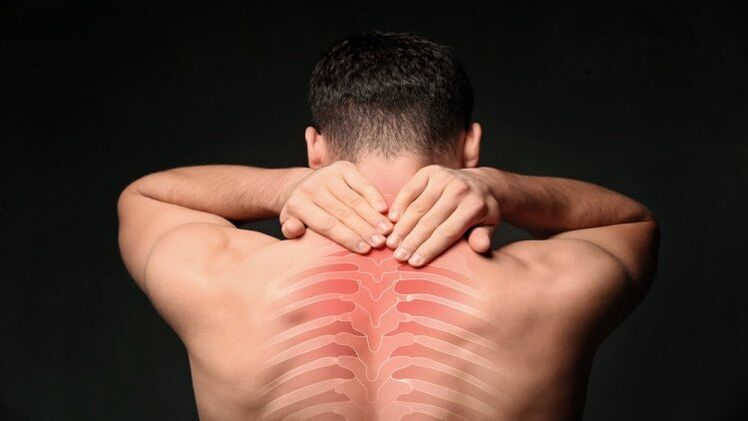Osteochondrosis is a chronic pathological process in which the vertebrae and the intervertebral discs located between them undergo degenerative-dystrophic changes. Most often, this disease affects the cervical and lumbar spine. The thoracic spine is much less frequently affected, however, this pathology presents certain difficulties in terms of differential diagnosis, because it can be confused with heart, lung or other diseases. In this article, we will look at thoracic osteochondrosis in terms of symptoms and treatment.
Clinical picture in osteochondrosis of the thoracic region

The main clinical sign of degenerative-dystrophic changes in the thoracic spine is localized pain syndrome between the shoulder blades, in the chest, along the ribs, etc.
Some patients report moderate pain, others extremely severe pain. The pain syndrome is aggravated by taking a deep breath, turning or tilting the torso, raising the arms, as well as other types of physical activity. Due to the localization of pain, osteochondrosis can be confused with angina, myocardial infarction, pancreatitis and some other diseases. It is extremely important to carry out a thorough differential diagnosis.
Due to severe pain, the patient cannot breathe deeply, which makes him short of breath. In parallel, sensory disorders of the upper limbs are often observed in the form of their numbness, tingling and much more, muscle tension in the back. In some cases, the clinical picture is supplemented by disorders of the digestive system, for example, bloating, epigastric pain, heartburn, etc.
Treatment of osteochondrosis of the thoracic spine
First of all, during the period of exacerbation of osteochondrosis of the thoracic spine, it is recommended to stay in bed or at least half-bed.
Nonsteroidal anti-inflammatory drugs are used to relieve pain.
In 2014, scientists from the National Medical University of Kazakhstan published an article, the results of which established the effectiveness of complex treatment of osteochondrosis using muscle relaxants.
As for muscle relaxants, they aim to stop muscle spasms.
The treatment plan is necessarily supplemented with B vitamins, physiotherapy procedures. Among the physiotherapeutic methods, electrophoresis, magnetotherapy, phonophoresis, etc. can be used.
After stopping the acute process, the patient can be prescribed massage courses, therapeutic exercises.
In some cases, the question of surgical intervention can be decided, for example, in the presence of an intervertebral hernia that compresses the spinal cord.























